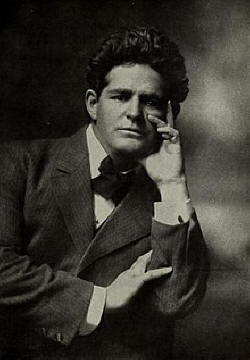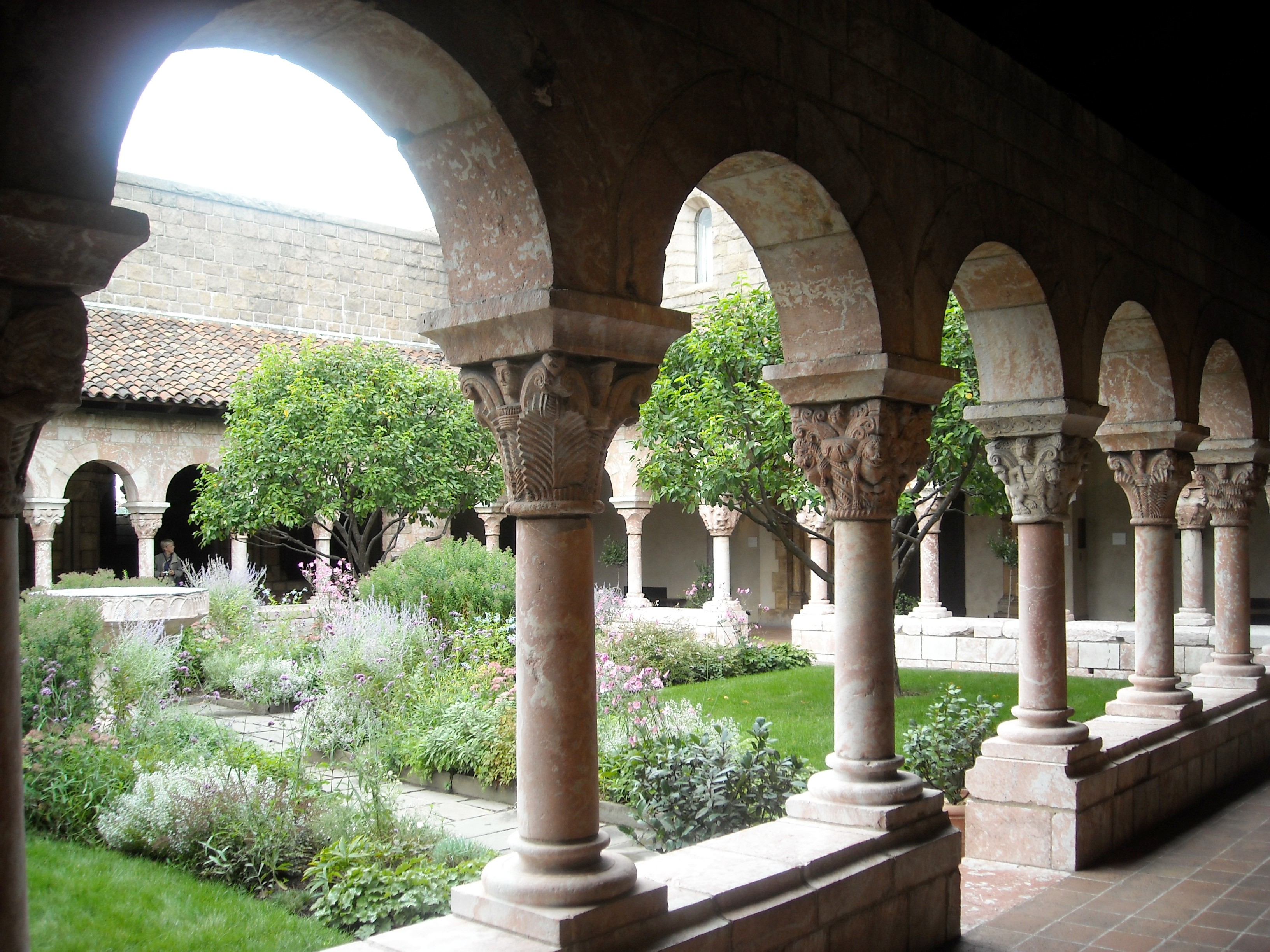

Queer Places:
The Barnard Residence, 113 E Linn St, Bellefonte, PA 16823
School of the Art Institute of Chicago, 116 S Michigan Ave, Chicago, IL 60603
École nationale supérieure des Beaux-Arts, 14 Rue Bonaparte, 75006 Paris, France
The Art Students League of New York, 215 W 57th St, New York, NY 10019
The Cloisters, 99 Margaret Corbin Dr, New York, NY 10040
Clark Art Institute, 225 South St, Williamstown, MA 01267
Lakewood Cemetery, Cooperstown, NY 13326
The Metropolitan Museum of Art, 1000 5th Ave, New York, NY 10028, USA
Brookgreen Gardens, 1931 Brookgreen Garden Dr, Murrells Inlet, SC 29576
Greenwood Cemetery, 1814 Lucas St, Muscatine, IA 52761
Carnegie Museum of Art, 4400 Forbes Ave, Pittsburgh, PA 15213
Smithsonian American Art Museum, F St NW & 8th St NW, Washington, DC 20004
Taft Museum of Art, 4214, 316 Pike St, Cincinnati, OH 45202
Chrysler Museum of Art, 1 Memorial Pl, Norfolk, VA 23510
Frances Lehman Loeb Art Center, 124 Raymond Ave, Poughkeepsie, NY 12603
Henry B. Plant Museum, 401 W Kennedy Blvd, Tampa, FL 33606
Halliday Park, Cairo, IL 62914
Schwab Auditorium, Pennsylvania State University, PA 16801
Kykuit, 200 Lake Rd, Tarrytown, NY 10591, USA
New Amsterdam Theatre, 214 W 42nd St, New York, NY 10036
Pennsylvania State Capitol Complex, 501 N 3rd St, Harrisburg, PA 17120
The Speed Art Museum, 2035 S 3rd St, Louisville, KY 40208
New York Public Library, 476 5th Ave, New York, NY 10018
Lytle Park, 501 E 4th St, Cincinnati, OH 45202
Lincoln Grove, Manchester M13 0DX, UK
Louisville Free Public Library, 301 York St, Louisville, KY 40203
Bernheim Arboretum and Research, 2075 Clermont Rd, Clermont, KY 40110
Springvale Cemetery, Cemetery Rd, Randolph, WI 53956
Scripps Park, Rushville, IL 62681
Kankakee County Museum, 801 S 8th Ave, Kankakee, IL 60901
George Grey Barnard Sculpture Garden, Tallyrand Park, 320 W High St, Bellefonte, PA 16823
Harrisburg Cemetery, 521 N 13th St, Harrisburg, PA 17103
 George Grey Barnard (May 24, 1863 – April 24, 1938), often written
George Gray Barnard, was an American sculptor who trained in Paris. He
is especially noted for his heroic sized
Struggle of the Two Natures in Man at the
Metropolitan Museum of Art, his twin sculpture groups at the
Pennsylvania State Capitol, and his Lincoln statue in Cincinnati,
Ohio. His major works are largely symbolical in character.[1]
His personal collection of Medieval architectural fragments forms a core part
of
The Cloisters in New York City.
George Grey Barnard (May 24, 1863 – April 24, 1938), often written
George Gray Barnard, was an American sculptor who trained in Paris. He
is especially noted for his heroic sized
Struggle of the Two Natures in Man at the
Metropolitan Museum of Art, his twin sculpture groups at the
Pennsylvania State Capitol, and his Lincoln statue in Cincinnati,
Ohio. His major works are largely symbolical in character.[1]
His personal collection of Medieval architectural fragments forms a core part
of
The Cloisters in New York City.
Barnard was born in Bellefonte, Pennsylvania, but grew up in Kankakee, Illinois, the son of Reverend Joseph Barnard and Martha Grubb, and the grandson and namesake of merchant George Grey Grubb. He first studied at the Art Institute of Chicago under Leonard Volk.[2] He attended the École nationale supérieure des Beaux-Arts in Paris, 1883–1887, while working in the atelier of Pierre-Jules Cavelier. He lived in Paris for twelve years, and scored a great success with his first exhibit at the Salon of 1894. He returned to America in 1896, and married Edna Monroe of Boston. He taught at the Art Students League of New York from 1900 to 1903, succeeding Augustus Saint-Gaudens.[2] He returned to France, and spent the next eight years working on his sculpture groups for the Pennsylvania State Capitol.[2] He was elected an associate member of the National Academy of Design in 189x, and an academician in 1902.
A strong Rodin influence is evident in his early work. His principal works include the allegorical "Struggle of the Two Natures in Man" (1894, in the Metropolitan Museum, New York); "The Hewer" (1902, at Cairo, Illinois); "Great God Pan" (1899, at Columbia University); the "Rose Maiden" (c.1902, at Muscatine, Iowa); the simple and graceful "Maidenhood" (1896, at Brookgreen Gardens).
In 1911 he completed two large sculpture groups for the new Pennsylvania State Capitol: The Burden of Life: The Broken Law and Love and Labor: The Unbroken Law. Between the two groups, they feature 27 larger-than-life figures.
His larger than life-sized statue of Abraham Lincoln (1917), was the subject of heated controversy because of its rough-hewn features and slouching stance. The first casting is at Lytle Park in Cincinnati, Ohio (Abraham Lincoln (George Grey Barnard), 1917), the second in Manchester, England (1919), and the third in Louisville, Kentucky (1922).[3]
The Great God Pan (1907), one of the first works Barnard completed after his return to America, according to at least one account, was originally intended for the Dakota Apartments on Central Park West. Alfred Corning Clark, builder of the Dakota, had financed Barnard's early career; when Clark died in 1896, the Clark family presented Barnard's Two Natures to the Metropolitan Museum of Art in his memory, and the giant bronze Pan was presented to Columbia University, by Clark's son, Edward Severin Clark.
French art dealer René Gimpel described him in his diary (1923), as "an excellent American sculptor" who is "very much engrossed in carving himself a fortune out of the trade in works of art."[4] Barnard had a commanding personal manner: "He talks of art as if it were a cabalistic science of which he is the only astrologer", wrote the unsympathetic Gimpel; "he speaks to impress. He's a sort of Rasputin of criticism. The Rockefellers are his imperial family. And the dealers court him."[5]

The Cloisters, 99 Margaret Corbin Dr, New York, NY 10040
Henry B. Plant Museum, 401 W Kennedy Blvd, Tampa, FL 33606
New York Public Library, 476 5th Ave, New York, NY 10018
New York Public Library, 476 5th Ave, New York, NY 10018
Interested in medieval art, Barnard gathered discarded fragments of medieval architecture from French villages before World War I.[6] He established this collection in a church-like brick building near his home in Washington Heights, Manhattan in New York City. The collection was purchased by John D. Rockefeller Jr. in 1925 and forms part of the nucleus of The Cloisters collection, part of the Metropolitan Museum of Art.[7]
Barnard died following a heart attack on April 24, 1938 at the Harkness Pavilion, Columbia University Medical Center in New York. He was working on a statue of Abel, betrayed by his brother Cain, when he fell ill. He is interred at Harrisburg Cemetery in Harrisburg, Pennsylvania.
Metropolitan Museum of Art, NYC
New Amsterdam Theatre, 214 W 42nd St, New York, NY 10036
My published books:
https://en.wikipedia.org/wiki/George_Grey_Barnard#References